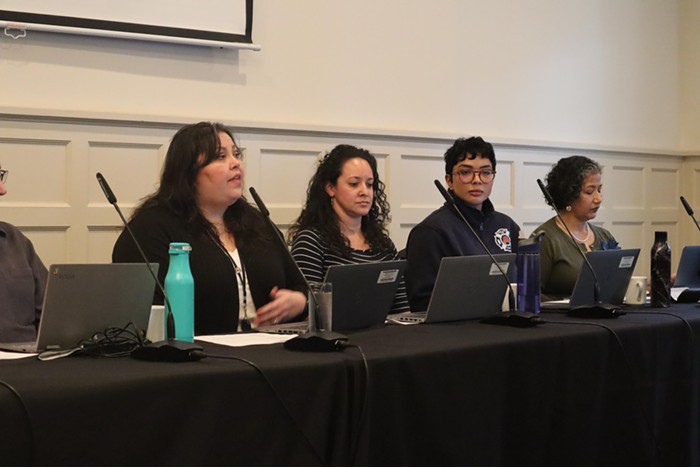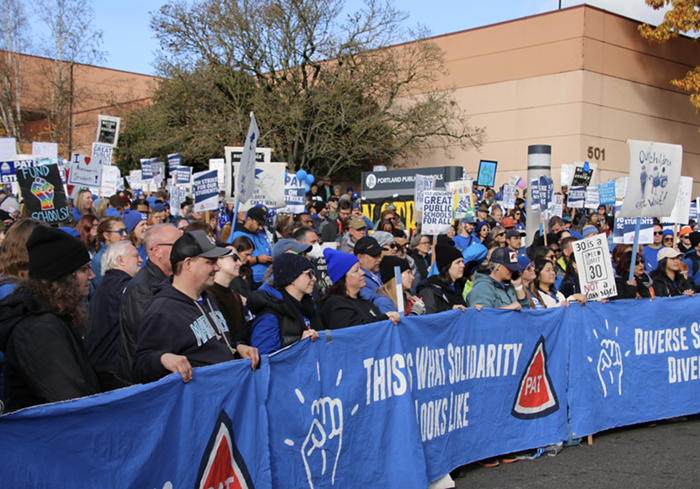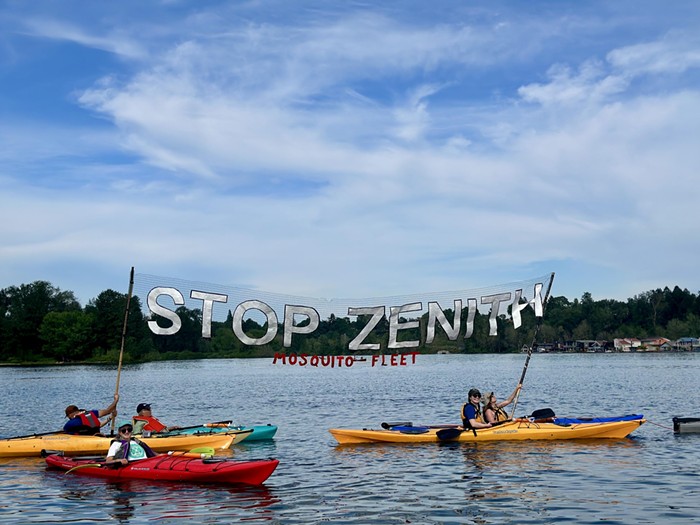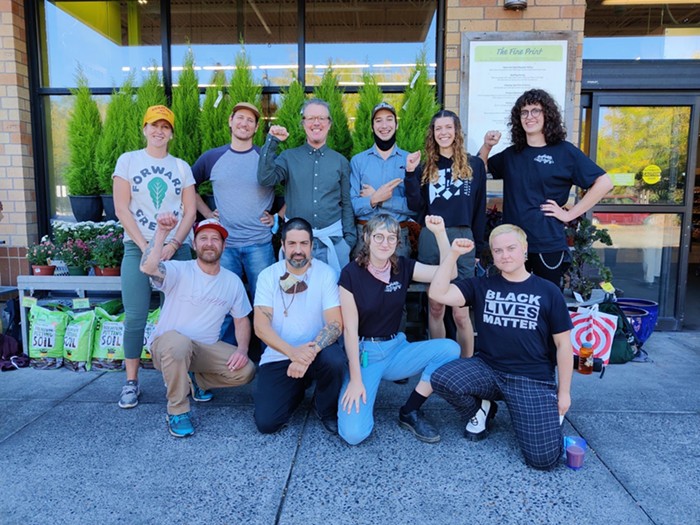ABOUT 20 KAYAKTIVISTS were on the water underneath the St. Johns Bridge in the wee hours of July 29 when 13 climbers belayed off the side, beginning a nearly 40-hour standoff with the MSV Fennica.
Connor DeVane, who volunteers with 350PDX, was one of the kayakers in the water. "We saw the [climbers'] spotlights first," he says, "and it was one of the coolest things I've ever witnessed."
It was the fifth day of a hastily organized protest aimed at keeping the Fennica—a 380-foot-long ice-breaking ship that's vital to Shell Oil's Arctic support fleet—from leaving Portland's Vigor Industrial, where it was dry docked for repairs. Local grassroots groups like Portland Rising Tide, Climate Action Coalition, and 350PDX first posted up at Cathedral Park on July 25, launching a flotilla protest to bring attention to the ship's arrival and to what they see as a catastrophic choice by President Barack Obama to permit Shell to drill for oil in the Chukchi Sea off the Alaskan coastline.

- DANGLERS: The prettiest form of protest you've ever seen.
- nataliebehring.com
No one expected the protesters dangling off the side of the bridge. Greenpeace, a long-time Shell foe, surprised everyone when it deployed a team of activists to Portland to get involved. The drama and spectacle of the 13 skilled climbers below Portland's most scenic bridge drew the attention of news outlets across the country as well as droves of Portlanders. By the time police, firefighters, and the US Coast Guard moved in to clear a path for the ship on July 30, the world was watching.
Meredith Cocks, an organizer with Portland Rising Tide, counted up to 100 kayaks on the water at the height of the protest. There were hundreds of people watching from the shore when the Fennica departed.
"I've been in activism in Portland for a long time and I've never seen anything like it," Cocks says. "People often feel really disempowered when it comes to fighting climate change, but I think the visceral nature of having a piece of machinery right there drew people in."
Protesters aren't the only ones who disagree with Obama's permissiveness. Oregon Senator Jeff Merkley in July introduced a bill that calls for the president to yank Shell's permits and ban any future drilling in the Arctic. Merkley cites US Department of the Interior estimates that there is a 75 percent chance of an oil spill of at least 42,000 gallons within the next 64 years if Shell is allowed to drill there. Because of the Arctic's remote location and harsh conditions, spill cleanup in the fragile ecosystem would be particularly difficult. (One of the most ironic aspects of Shell's bid for Arctic oil is that the earth's rising temperatures, and the rapidly melting ice in the region allows the oil company to get its equipment up there in the first place.)
Portland Mayor Charlie Hales also stated he doesn't support drilling in the Arctic, but that the law dictated the Fennica be allowed to pass.
The action in Portland last week wasn't an isolated protest. In Seattle, activists started training in April for a flotilla protest of the Polar Pioneer—a massive oil-drilling rig leased by Shell—that called the Port of Seattle's Terminal 5 home until heading north in June.

- The United States Coast Guard escorts the Shell-leased icebreaker MSV Fennica back to the dock after the ship was prevented by activists from passing under the St. Johns Bridge.
- Tim Aubry / Greenpeace
Cocks says Portland's protest was made possible by an influx of help from people who organized the Seattle flotilla. They offered kayaking instruction and gave protest organizers advice about what worked and what didn't.
"The Seattle blockade set the stage for this and really got people excited," Cocks says. "But obviously the climbers off the bridge and the boldness of that action really got people's attention."
That was all Greenpeace, which heard about the Fennica and decided to get in on the protest. Mary Nicol, a Greenpeace activist who lives in Chicago, flew in to help organize and execute the dramatic action.
"Without a doubt, for those 40 hours that we stalled the Fennica, all eyes were on Portland," she says. "Time and time again, companies like Shell have used their money to intimidate people, and it takes everyone standing together, and sometimes putting their bodies in harm's way, to draw attention to the issue of keeping fossil fuels in the ground."
The Fennica arrived in Portland under cover of darkness on July 25 and Greenpeace activist Elizabeth Mount—who traveled from her home in Denver to suspend herself under the bridge—said the timing of the climbers' deployment in the middle of the night July 29 was a response to the Fennica's request for pilot boats, an indication the ship was ready to leave.
Mount, who's participated in climbing-related actions with the Earth First Climbers Guild, got to Portland largely unaware of what she would be doing.
"I didn't ask a lot of questions because I knew the fewer people who knew what's happening, the better chance there'd be for success," Mount says. "I knew it was going to be a direct action that could make a real difference—but it's probably good that I didn't have a lot of time to think about just how high it was up there."
The St. Johns Bridge deck sits 205 feet above the Willamette River, and climbers were connected to the bridge at two distinct points. Mount, one of three climbers authorities removed on July 30 to allow the Fennica through, said the scariest part was when firefighters started cutting lines and messing with her rope system.
Steve Nichols, who lives in Portland, was stationed on the bridge to provide support to the climbers.
"We were able to raise awareness worldwide on a level that hasn't been seen before," he says. "The fact that millions of people now know that Obama is allowing Shell to drill in the Arctic exceeded my expectations. It was a huge success—even though we knew we couldn't keep the Fennica here forever."



















